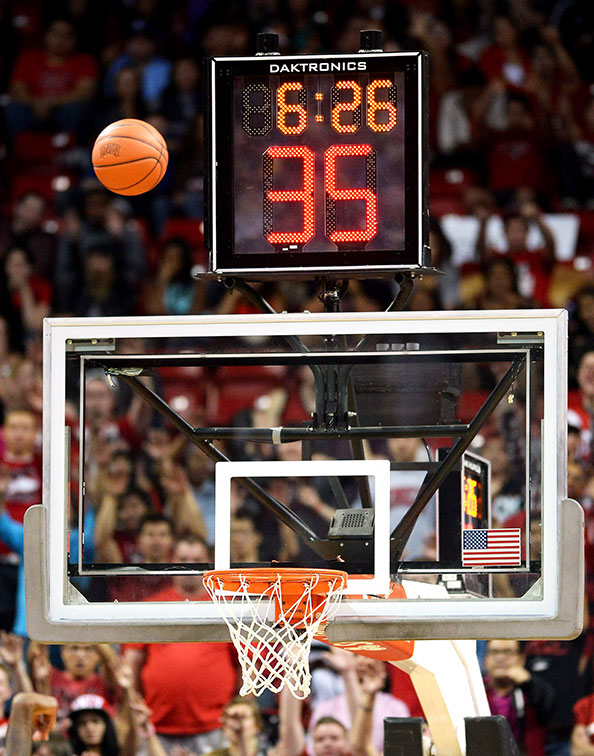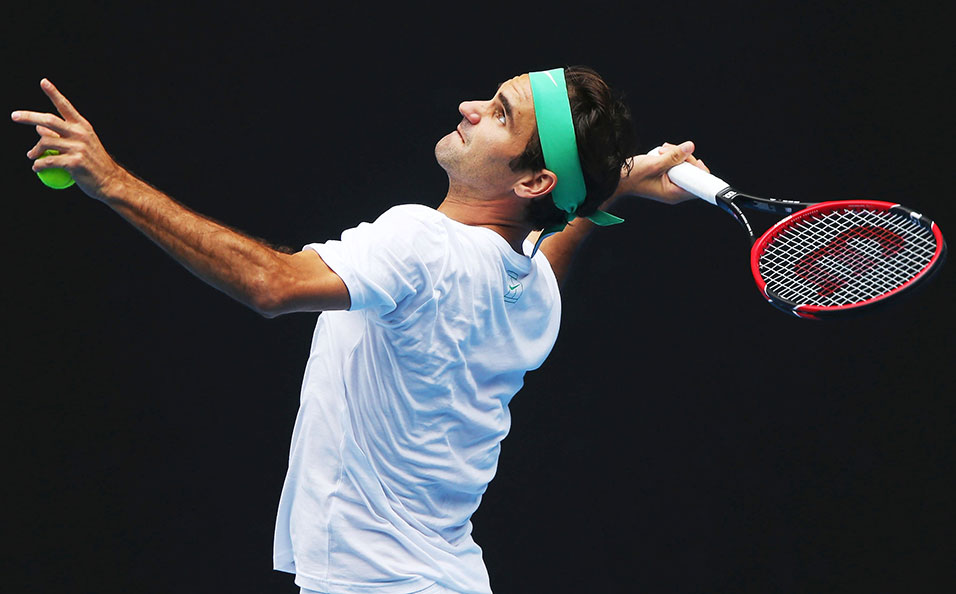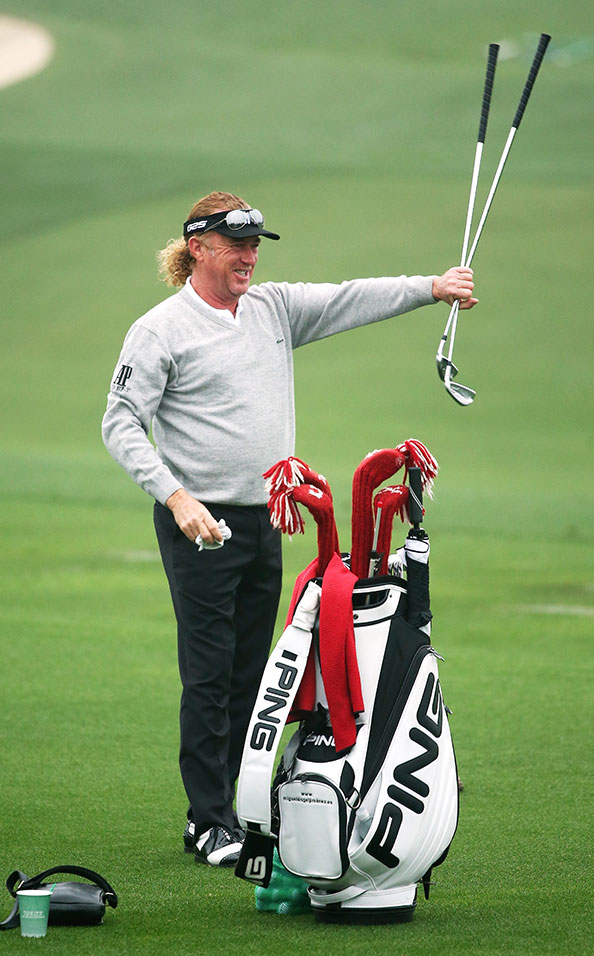Golf seems to be an odd choice for the Olympics. Many Olympic sports are explosive in nature – over in a matter of seconds or a few minutes. Hop, skip, jump. On your mark, set, go. A professional golf tournament can take 48 hours of playing time before drawing to a conclusion.
The pinnacle in men’s golf is winning one of the four Majors, which no Olympic gold medal could possible trump. But with the Rio Olympics on the mind, it’s pertinent to consider What Golf Can Learn From Other Sports.
It’s pertinent because professional golf is a quantum leap from the game pursued by club and social golfers on a weekly basis. Golf is hard to master and time-consuming for them to play. Hence, we’ve seen the emergence of well-intentioned proposals such as cups the size of a bucket and nine-hole competitions advocated by the R&A.
Golf could learn a thing or two from other sports and games. By thinking laterally, as Edward de Bono would say, we could discover solutions to the game’s problems.
Basketball
Introduce a Shot Clock
 Golf’s become too slow. The game will never flourish again while we have club competition rounds taking up to five hours, sometimes more. A lot of the blame can be attributed to the broadcast of professional golf. Half a century ago, before golf was televised, the average club round in Australia used to take a bit over three hours.
Golf’s become too slow. The game will never flourish again while we have club competition rounds taking up to five hours, sometimes more. A lot of the blame can be attributed to the broadcast of professional golf. Half a century ago, before golf was televised, the average club round in Australia used to take a bit over three hours.
In basketball, a shot clock [above] is used to quicken the pace of play and scoring levels. The NBA has a 24-second limit where the offensive team has to attempt a field goal before the shot clock expires. Violating the time limit results in the ball being turned over to the opposition.
A shot clock is also used in AFL, snooker, lacrosse, water polo and ten-pin bowling. A play clock is used in American football. In netball, players have three seconds to release the ball.
There is a correlation between how professional golf influences amateur golf. It stands to reason that if the professionals get their act together, amateurs will follow suit.
So how could a shot clock be introduced to professional golf? A volunteer assigned to each grouping could be in charge of policing the speed of play. If players dilly-dally, a rules official is called in to take over and officially put them ‘On The Clock’.
Tennis
Offer a Second Serve& Staging Concurrent Men’s and Women’s Events
Golf is too hard for a lot of people without the time to practice. Amateur golf could borrow the ‘Second Serve’ from tennis. Simply re-load another ball when an errant tee shot goes out-of-bounds. Dunk your approach in the water. Have a mulligan. It would help speed up play.

Tennis has also shown how to stage concurrent men’s and women’s tournaments where they play side-by-side at the Grand Slams. Earlier this year in Morocco, the European Tour and the Ladies European Tour came together at Royal Golf Dar Es Salam to both host events for the first time at the one venue. The men teed up on the Red Course in the Trophée Hassan II while the women were on the Blue Course competing in the Lalla Meryem Cup.
This follows the successful co-staging of the Vic Open at Thirteenth Beach where the PGA Tour of Australasia and Australian Ladies Professional Golf have run concurrent tournaments for the past few years. Junior tournaments run concurrent boys’ and girls’ events. Yet professional golf in America – the epicentre of the game – is too conservative to consider something like concurrent tournaments.
Formula 1 Motor Racing
Tweaking the Rules to Put a Premium on Skill
You can say a lot of things about Formula 1 Motor Racing, but you couldn’t accuse it of being conservative when it comes to tinkering with rules and regulations. The highest class of single-seat auto racing has evolved radically throughout the sport’s history.
Every few years the sport undergoes a major transformation (such as reducing engine capacity or banning traction control). Rule changes are often adopted with regard to health and safety. However they’re also implemented with a desire to ensure the championship is decided on driver skill rather than technology.
Professional golf could learn a lesson here. Oversized driver heads and aerodynamic golf balls have placed a premium on power and taken away a lot of artistry. Today, it’s harder for good ballstrikers to separate themselves from the pack at the elite level.
Unrestrained technological advances have also widened the chasm in skill level between top pros and unaccomplished amateurs. As the pros mastered the new equipment, course architects were encouraged to build longer, more difficult courses to test better players. However, unaccomplished amateurs struggle on longer courses with penal hazards, which are also more expensive to maintain.

Tinkering with golf’s rules and regulations to decrease existing limits wouldn’t be a bad thing. Would equipment makers really be upset? Maybe. But if technology related to driving distance were wound back, golfers would have to purchase new equipment – drivers and balls – to comply with rule changes. And that’s in the interest of equipment makers.
While on the subject of Formula 1, it’s about time golf’s equipment manufacturers had some greater input into the way tournaments are conducted. After all, they pour large amounts of money into professional golf through research and development as well as with the marketing and endorsements of players.
Imagine if there were a ‘Constructors’ Championship’ in America and Europe once a year. Players who endorse the same brand of equipment could play together in a teams’ event of four-ball, foursomes or some other interesting format. Perhaps even a doubles’ competition, allowing like-minded players (such as Jason Day and Tiger Woods) to play with one another.
Rugby Sevens
Fewer numbers, more expression
Traditional 15-man rugby union can be tedious to watch when defence reigns supreme. It’s hardly the ‘Game Played In Heaven’ when a result is decided by whichever team has the best goalkicker. Rugby Sevens has shown that with fewer numbers on the park, players have more freedom to express themselves. Attacking skills and flair are on display in this seven-a-side format.

Limiting the number of clubs in the bag would be a way of reintroducing some artistry back into golf. With 14 clubs in the bag, the pros can attack a course with virtual impunity. Calculate the distance and dial in the iron by numbers. But with, say, seven clubs in the bag they would find themselves in between clubs more often and be forced to weight their irons, control their trajectory and ball flight.
World Surf League
Match-play creates tension
Surfing has much in common with golf. In essence, they’re both about individuals challenging themselves against the ‘course’. At the professional level, it’s about beating your opponent’s score on the course you share. As a point of difference, surfers are judged on how relaxed they appear rather than just the difficulty of their tricks and manoeuvres. (The coolest golfers won’t score extra points on the course, but they do reap the benefits of larger endorsement deals off the course.)
Another distinction is that professional surfing relishes the gladiatorial contest at every single tournament. The World Surf League uses three-man heats in the early rounds. The winner advances, while the two losers face off in a repechage in the next round. It’s not until the quarter-final stage the competition morphs into one-on-one: mano a mano.
In contrast, professional golf has an aversion to match-play. It’s the only possible conclusion to be drawn as to why strokeplay is the preferred format for more than 95 per cent of tournaments on the world’s major tours. And as we’ve recently discovered, the overused 72-hole strokeplay format was a deterrent for top players like Adam Scott from teeing it up in Rio.
Two obvious reasons stand out for golf’s aversion to match-play. Broadcasters dislike match-play because it can throw up little known players for the climatic semi-final and final matches – apparently a turnoff for viewers. And the pros don’t take kindly to the prospect of being eliminated in a fickle 18-hole match-play contest (which explains why the WGC-Dell Match Play now uses a round-robin format over the first three days).
Other formats could be tested to appease broadcasters and players. It would be interesting to use Split Sixes, which is a fun, tactical golf game for three people. Six points are up for grabs on each hole. The outright winner receives 4 points, the second-best score gets 2 points and 0 for the third player. If one person wins and the other two halve, then it would be 4-1-1. If the hole is halved three ways, it’s 2-2-2. And so on.
To take this in another direction, the latter stages of a match-play tournament could adopt a Skins-style format. After all, Skins proved to be a ratings bonanza when it was first brought to TV. Imagine a match-play event that concludes with three or four players battling it out in a Sunday finale.
Cricket
Pack excitement into a shorter form
The biggest deterrent to more people playing the game is a lack of time. It’s an issue that most of the world’s governing bodies are determined to address.
More than any other sport, cricket has flourished with the adoption of shorter versions of the game. Over the past 40 years, the most popular form of cricket went from five-day Test matches to the one-day international, which has since been superseded by the 20-over format.
Yet four-day, 72-hole strokeplay remains the preferred method of competition in professional golf. It’s hard to believe how little has changed during an age of digital disruption.
However, golf already has the genesis of an interesting short format. It’s called the Drive, Chip & Putt Championship [below], which is an American junior skills competition for boys and girls aged 7-15.

How does it work? Children compete by hitting three shots in three skill-based challenges – driving, chipping and putting – scoring up to 25 points per shot, 75 points per skill. The overall champion is determined from the most points accumulated between all three skills (maximum of 225 points).
In the driving challenge, juniors score points by hitting the ball into a 40-yard wide fairway. The further the drive, the more points. For example, a tee shot that finishes within 75-100 yards scores 4 points. A shot between 170-180 yards scores 12 points and a drive more than 300 yards receives the maximum 25 points.
They then attempt three 10-15 yards chip shots. Points are awarded for proximity to the hole. For example, 2 points for a ball finishing 8’-10’ from the hole, 10 points for a ball 4’-6’ and 25 points for a hole-in-one. (Shots are measured from the centre of the hole with a string marking the scoring rings.)
On the putting green, each boy and girl hits three putts over distances of 6, 15 and 30 feet. Points are awarded for proximity to the hole with a maximum of 25 points for a hole out.
Archery
Make the target the object
By breaking down golf into its basic components, you begin to challenge your perception about what exactly the sport is all about. In essence, it’s hitting a golf ball towards a target.
So could there be another form of the game that is just as enjoyable but takes less time? Where you don’t have to walk eight kilometres and forage in the trees for lost balls? Where you can play as many strokes in 30 minutes as you would play during an 18-hole round?
And that’s the appeal of TopGolf, the driving-range phenomenon sweeping America. Players score points by hitting balls (assigned using microchip technology) to various targets. The more accurate your shot and the farther the distance, the more points you earn. It’s golf-meets-archery.

European Tour
Showing the Way Forward
On the eve of the Rio Olympics came news the European Tour is considering a shorter format to revolutionise tournament golf. The radical version would be played over six holes and feature time limits for shots, blaring music and different clothing.

In a brazen attempt to attract young people to the sport, Keith Pelley [above], chief executive of the European Tour, indicated there would be an experiment with the new format next year with the possibility of a tournament in 2018.
“Golf has to be a little more open to letting the youth actually participate,” Pelley told BBC Radio. “There’s no question that is something we believe in as well.
“You look at some of the new formats that have been created – when you look at adventure golf, or the brand TopGolf . . . it’s really geared towards millennials, so the way that people are participating in the game is completely different.
“Let’s be honest – and scientific data proves this – attention spans are decreasing as opposed to increasing and it’s completely different when the choice people have to consume content now is so different than it was 35-40 years ago.
“So you have to change, people’s time is so precious that golf – I think every golf course being built needs to be six holes, six holes, six holes – so that people can go at the beginning before they go to work.”
Pelley has already shown a desire to modernise the game. Players were allowed to wear shorts during practice days and pro-am for the first time at this year’s Abu Dhabi HSBC Golf Championship.
The Canadian added a poignant comment in his BBC interview, saying: “But if you’re not prepared to change, if you’re not prepared to be innovative, if you’re not prepared to take chances, then I do believe that the sports that aren’t will fall behind.
“The tradition, the integrity of the game, the 72-hole tournament will always be there in some form. But if you catapult ahead 10 or 15 years, the game of golf will be consumed completely differently and there will be different formats that will be successful as content entertainment makers.”




